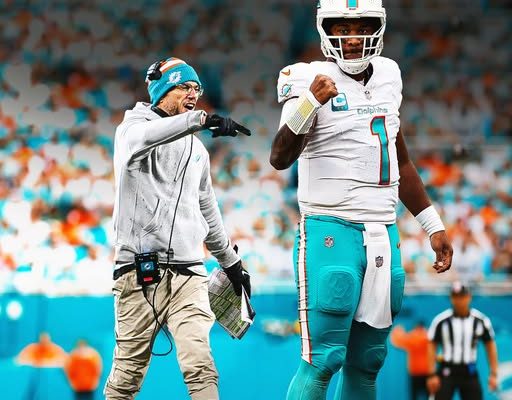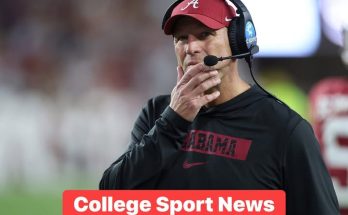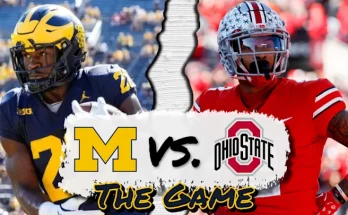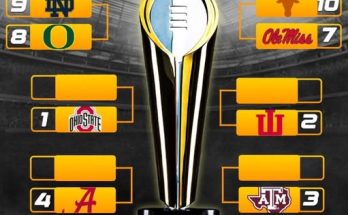The Miami Dolphins, long characterized by flashes of promise overshadowed by inconsistency, are undergoing a subtle but seismic shift. While the front-facing narratives have centered on Tua Tagovailoa’s contract situation, Tyreek Hill’s explosiveness, or the team’s postseason frustrations, the Dolphins’ front office has been quietly crafting a long-term vision. A careful eye will notice the movement: younger players are being given more prominent roles, aging veterans have been allowed to walk, and salary cap flexibility is being treated like gold. The 2025 offseason has confirmed it—the Miami Dolphins are not just building a team to contend for a single year. They’re trying to shape a sustainable contender for the long haul.
Chris Grier, the Dolphins’ general manager, has had his share of skeptics. His track record in free agency has been a mix of bold strokes and questionable signings. But in the past two seasons, Grier has shifted tactics. The splashy, headline-grabbing deals have been replaced with careful cap management and strategic investment in draft capital. Instead of trading away picks for short-term fixes, Miami is building a pipeline of young talent through the draft. This isn’t about patching up holes—it’s about building a foundation.
You can see this shift most clearly in how the Dolphins have restructured their defense. The departure of veterans like Jerome Baker and Xavien Howard—cornerstones of Miami’s past defensive identity—wasn’t just about cap relief. It signaled a willingness to let go of legacy players and usher in a younger, faster, more modern unit. Players like Cam Smith and Jevon Holland are expected to anchor this new defense, and the coaching staff has put considerable energy into accelerating their development.
Vic Fangio’s departure and the promotion of Anthony Weaver as defensive coordinator mark another strategic pivot. Fangio was brought in to create a championship-caliber defense, but his scheme didn’t mesh with Miami’s personnel. Weaver, by contrast, brings a player-first approach that emphasizes adaptability and aggression—perfect for a youthful group eager to prove themselves. Under Weaver, expect the Dolphins’ defense to lean more on raw speed and less on rigid structure. This fits the DNA of a team trying to get younger and more flexible on both sides of the ball.
On offense, the Dolphins still lean on veterans like Hill and Terron Armstead, but the team has quietly begun investing in their replacements. Drafting wide receiver Malik Washington and offensive lineman Patrick Paul were clear signals of intent. Washington, with his electric speed and route-running ability, could become the next dynamic slot option in Mike McDaniel’s offense. Paul, though raw, brings physical tools that could eventually allow him to take over one of the tackle spots. Meanwhile, De’Von Achane, still only entering his second year, looks poised to become a feature back. His explosive speed and ability to make defenders miss in space give Miami an offensive weapon that can carry the load when Hill and Jaylen Waddle are covered or limited.
Perhaps the most defining question for this franchise remains the quarterback. Tua Tagovailoa has been solid—accurate, efficient, and a strong locker room presence. But he has yet to cross the threshold into elite territory, and his injury history continues to be a concern. Miami picked up his fifth-year option, but a long-term extension remains in limbo. This is a calculated risk. The Dolphins are giving Tua one more year to prove he can be the long-term answer, but they’re also preparing contingencies.
In years past, a team in Miami’s position might have extended Tua early, locking in a contract that could become cumbersome if his development stalled. Instead, Grier and his team are playing the long game. By waiting, they maintain financial flexibility, and if Tua falters, they won’t be handcuffed to an albatross deal. This type of cap discipline is a departure from the past, and it’s a hallmark of organizations that think in decades, not just seasons.
Behind Tua, the Dolphins added depth by drafting a late-round developmental quarterback and signing a veteran backup who knows McDaniel’s system. These aren’t headline moves, but they’re crucial for long-term stability. Injuries happen. Teams with a plan B—and sometimes even a plan C—are the ones that survive the chaos of an NFL season. Miami isn’t just building a team. They’re building an infrastructure.
Salary cap flexibility has been a consistent theme this offseason. Miami avoided handing out any bloated contracts and has shown a willingness to move on from players whose cap hits outweighed their on-field production. The team has also structured contracts to be front-loaded or easily escapable. This ensures that future offseasons aren’t crippled by the decisions of the present. It’s a discipline rarely seen in today’s win-now NFL.
The shift in philosophy also appears in how the Dolphins are handling free agency. Rather than making a big splash, they’ve targeted under-the-radar players with upside. Guys like Jordyn Brooks and Jonnu Smith may not light up highlight reels, but they fill clear needs and offer value. Miami is avoiding the temptation of overpaying for big names and instead finding contributors who can grow within their system.
This approach demands more from the coaching staff. Developing young players takes time, patience, and continuity. That’s why retaining McDaniel and much of his staff was crucial. McDaniel’s culture—player-friendly, detail-oriented, and intellectually sharp—has created a space where young players can thrive. His offensive system is complex but rewarding. Players who buy in get better quickly. Those who don’t, don’t last.
One of the less discussed but vital components of Miami’s long-term vision is their investment in analytics and sports science. The Dolphins have expanded their performance staff and brought in specialists in injury prevention, sleep science, and data modeling. This may seem like fluff to some, but it’s becoming standard for smart franchises. If your team’s best players can stay healthy an extra two games per year, that can be the difference between making the playoffs or missing out entirely.
Miami’s ownership also deserves some credit. Stephen Ross, long criticized for meddling or pushing short-sighted decisions, has taken a more hands-off approach in recent years. Bruce Beal and Tom Garfinkel have stepped into more prominent operational roles, and the result has been a more stable front office dynamic. Ownership’s patience has allowed Grier and McDaniel to build without the constant threat of a rebuild. Stability breeds success in the NFL, and Miami is beginning to reap the benefits of it.
Of course, there are still questions. Will the offensive line finally gel? Can the defense take a step forward under Weaver? Will Tua stay healthy? These are not small concerns. But the Dolphins have positioned themselves to answer them not just with hope, but with options. That’s the essence of a well-run team. You don’t just build for the best-case scenario—you prepare for everything in between.
The AFC remains a brutal conference. Patrick Mahomes, Josh Allen, Joe Burrow, Lamar Jackson, and now C.J. Stroud all present steep obstacles. Miami may not be the favorites in this gauntlet, but they are no longer just a fringe playoff team hoping for breaks. They are becoming a smart, modern organization capable of adapting, adjusting, and competing over time.
In many ways, this transition mirrors what teams like the Buffalo Bills, Baltimore Ravens, and even the Philadelphia Eagles have done—slow, deliberate roster construction, intelligent drafting, and cap-smart management. The Dolphins want to be more than a flash in the pan. They’re trying to become a team with a decade-long window, not a one-year shot at glory.
In 2025, they may not win the Super Bowl. They might not even win the AFC East. But if you look closely, you’ll see a franchise finally operating with long-term clarity. Youth is being prioritized not because of necessity, but because of strategy. Financial flexibility isn’t a byproduct—it’s a guiding principle. And player development isn’t an afterthought—it’s the core of the plan.
The Miami Dolphins are entering a new era. One that may not start with fireworks but could end with championships. For the first time in a long time, the team isn’t just chasing the present—they’re investing in the future. And in today’s NFL, that might be the smartest play of all.



